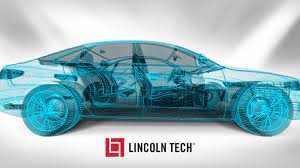Revolutionizing Transportation: The Future of Automotive Technology

The Evolution of Automotive Technology
Over the years, automotive technology has made significant advancements, revolutionizing the way we drive and interact with vehicles. From early innovations like the invention of the internal combustion engine to modern developments in electric and autonomous vehicles, the automotive industry continues to push boundaries and shape the future of transportation.
Key Technological Milestones
One of the key milestones in automotive technology was the mass production of automobiles by Henry Ford in the early 20th century. This innovation not only made cars more affordable and accessible to the general public but also paved the way for advancements in assembly line manufacturing.
In more recent times, we have witnessed a shift towards electric vehicles (EVs) as a cleaner and more sustainable alternative to traditional gasoline-powered cars. The development of lithium-ion batteries and charging infrastructure has accelerated the adoption of EVs, leading to a greener future for transportation.
The Rise of Autonomous Vehicles
Another major trend in automotive technology is the rise of autonomous vehicles. Companies like Tesla, Google (Waymo), and traditional automakers are investing heavily in self-driving technology to create safer and more efficient driving experiences. With advancements in sensors, artificial intelligence, and connectivity, autonomous vehicles are becoming a reality on our roads.
The Future of Automotive Technology
Looking ahead, automotive technology is set to continue its rapid evolution. Innovations such as vehicle-to-everything (V2X) communication, augmented reality displays, and advanced driver-assistance systems (ADAS) will further enhance safety, convenience, and connectivity for drivers and passengers alike.
As we embrace these technological advancements, it is essential for industry stakeholders to collaborate on standards, regulations, and cybersecurity measures to ensure a seamless transition into a smarter and more connected automotive future.
“The Mechanics of Autonomy: How Autonomous Vehicles Function”
“Enhancing Safety and Comfort: The Advantages of Advanced Driver-Assistance Systems”
4.
- What is the difference between hybrid and electric vehicles?
- How do autonomous vehicles work?
- What are the benefits of advanced driver-assistance systems (ADAS)?
- Are electric vehicles suitable for long-distance travel?
- How does vehicle-to-everything (V2X) communication improve road safety?
- What impact will artificial intelligence have on the future of automotive technology?
What is the difference between hybrid and electric vehicles?
When comparing hybrid and electric vehicles, the key difference lies in their power sources. Hybrid vehicles utilize both a conventional gasoline engine and an electric motor to propel the vehicle, combining the benefits of internal combustion engines with electric power for improved fuel efficiency and reduced emissions. On the other hand, electric vehicles (EVs) rely solely on electricity stored in batteries to power an electric motor, eliminating the need for gasoline entirely. While hybrids offer a transition towards greener driving with a backup gasoline engine, EVs provide a fully electric and sustainable alternative for zero-emission transportation. Each type of vehicle has its advantages and considerations, catering to different preferences and driving needs in the realm of automotive technology.
How do autonomous vehicles work?
Autonomous vehicles, also known as self-driving cars, operate using a combination of advanced technologies such as sensors, cameras, radar, lidar, and artificial intelligence algorithms. These vehicles gather real-time data from their surroundings to perceive road conditions, detect obstacles, and make informed decisions about navigation and driving tasks. Through intricate mapping systems and complex algorithms, autonomous vehicles can interpret the environment, plan routes, and execute maneuvers without human intervention. The integration of machine learning and sensor fusion enables these vehicles to continuously learn and adapt to different driving scenarios, ensuring safe and efficient autonomous transportation in the evolving landscape of automotive technology.
What are the benefits of advanced driver-assistance systems (ADAS)?
Advanced driver-assistance systems (ADAS) offer a range of benefits that enhance vehicle safety and driving experience. These systems utilize cutting-edge technology such as cameras, sensors, and radar to provide drivers with real-time assistance in various driving scenarios. Some key benefits of ADAS include improved road safety through features like automatic emergency braking and lane-keeping assistance, enhanced convenience with adaptive cruise control and parking assistance, as well as increased awareness of surroundings with blind-spot monitoring and collision warning systems. Overall, ADAS plays a crucial role in reducing accidents, mitigating risks, and ultimately making driving safer and more efficient for motorists.
Are electric vehicles suitable for long-distance travel?
Electric vehicles (EVs) have made significant strides in recent years, making them increasingly suitable for long-distance travel. With advancements in battery technology and the expansion of charging infrastructure, EVs now offer extended driving ranges and faster charging times, addressing concerns about range anxiety. Many modern EV models can travel over 200 miles on a single charge, and rapid charging stations are becoming more prevalent along highways, allowing drivers to recharge quickly during long journeys. As the automotive industry continues to invest in EV development, the feasibility and convenience of using electric vehicles for long-distance travel are steadily improving, making them a viable and sustainable option for eco-conscious drivers.
How does vehicle-to-everything (V2X) communication improve road safety?
Vehicle-to-everything (V2X) communication plays a crucial role in enhancing road safety by enabling vehicles to communicate with each other and with the surrounding infrastructure. This technology allows vehicles to exchange real-time data such as speed, location, and road conditions, helping drivers anticipate potential hazards and make informed decisions. With V2X communication, vehicles can receive warnings about upcoming obstacles, traffic congestion, or emergency situations, allowing them to react quickly and avoid accidents. By creating a connected network on the road, V2X technology has the potential to significantly reduce collisions, improve traffic flow, and ultimately make our roads safer for all users.
What impact will artificial intelligence have on the future of automotive technology?
Artificial intelligence (AI) is poised to have a profound impact on the future of automotive technology, reshaping the industry in numerous ways. AI will be central to the development of autonomous vehicles, enabling them to interpret sensor data and make real-time decisions for safe navigation. It will also enhance driver-assistance features, such as predictive maintenance and advanced safety systems, making vehicles smarter and reducing the likelihood of accidents. Moreover, AI-driven analytics can lead to more personalized driving experiences by learning driver preferences and adapting vehicle settings accordingly. In manufacturing, AI can streamline production processes, improving efficiency and quality control. As AI continues to advance, its integration within automotive technology promises a future where transportation is not only more intelligent but also more efficient and safer for everyone on the road.



